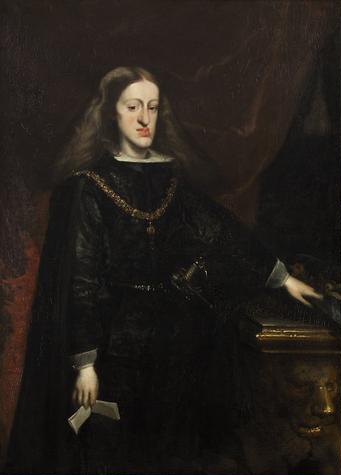Gonzalo Alvarez led a team from the University of Santiago de Compostela in Spain performed a formal genealogy study on the family tree of Charles II (see above). The study is entitled The Role of Inbreeding in the Extinction of a European Royal Dynasty. As is evident from the family tree, Charles II’s genealogy loops back on itself multiple times. Reporting in the journal PLoS, Alvarez’s team found two noteworthy items:
• Charles II’s inbreeding coefficient was so high that it was greater than the offspring from a brother-sister mating.
• The infant mortality rate of the Spanish Hapsburgs was considerably greater than that of the general population. More than ¾ of all Hapsburg children died before the age of ten, in spite of having access to the finest medical resources of the times. The high amount of inbreeding resulted in a high mortality rate.

Above is an official portrait of Charles II. It clearly shows the challenge court painters faced portraying the Hapsburgs. Evident in this sympathetic painting of Charles II is what is known as the “Hapsburg Lip”, a severely elongated lower jaw and drooped lip that was a common recessive trait of all Hapsburgs across Europe. In Charles II’s case, his head was so misshapen that he was unable to chew at all because his top and bottom teeth did not meet.

